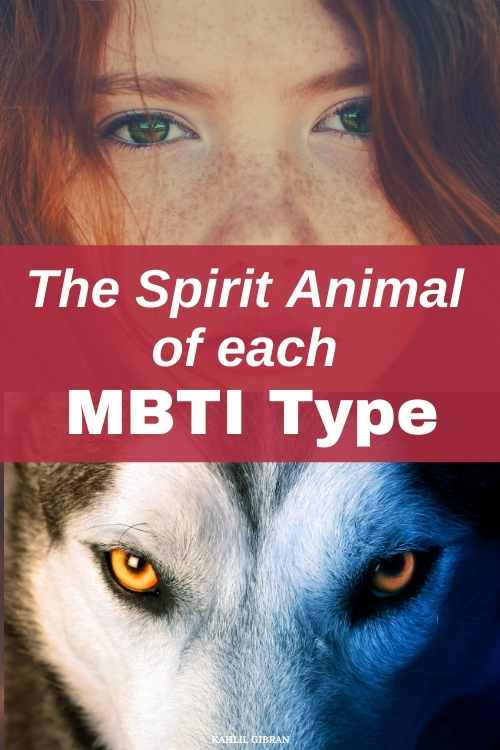Unless you live inside a Disney movie, animals can’t speak. The quirky animal sidekicks you can get in life tend to focus on eating stuff they shouldn’t, instead of making witty one-liners.
But despite it all, animals have a personality. And very distinctive ones at that, too. Dogs do not act like cats or penguins. Although they don’t have human characteristics, their behavior can parallel our own.
That’s why multiple cultures have created a spiritual link between animals and a person, and assign one guardian animal to each person, according to who they are and how to behave.
While we may not be as mystical as that, we are animal lovers and MBTI experts first and foremost. We love cute animals, we love MBTI, and we love understanding a cute animal’personality and link it to each MBTI type.
Interested? Then keep reading to discover your very own spirit animal, according to your MBTI.
INTJ: Raven. ?
Fiercely smart and clever, ravens are amongst the most intelligent species in the animal kingdom. Their problem-solving skills and ability to come up with strategies are reminiscent of the tactical mindset of the INTJ, so it’s not a surprise these corvids are the INTJ’s spirit animal.
Beyond their smarts, ravens are also large and imposing—something that resembles the INTJ’s intimidating presence and strong confidence in their own skills. Similarly, and unlike their social crow cousins, ravens are fiercely independent and prefer solitude, much like most INTJs.
ENTJ: Bald Eagle. ?
ENTJs are leaders first and foremost. Projecting equal parts confidence, respect, and authority, ENTJs are as intimidating as they are inspiring, oozing charisma merged with deep rationality to achieve set goals.
No other creature is a better fit to be their spirit animals than the majestic bald eagle.
It’s hard to confuse a bald eagle for a cuddly creature—they are ruthless and fierce. However, that doesn’t stop them from being a noble animal that inspires awe upon whoever looks at them. Just remember they’re relentless, much like ENTJs.
ISTJ: Horse. ?
Hardworking, dutiful, reliable, and stubborn—ISTJs are dedicated to everything they do, be it a project or a hard-headed commitment to lazing around all day.
That’s why their spirit animal cannot be any other than the hardworking horse. Their strong will, mixed with their calm behavior, makes them some of humanity’s oldest companions.
But that doesn’t mean they’re submissive. Just like ISTJs, horses are stubborn and have their own personality and way of doing things. However, both horses and ISTJs are prone to pushing themselves too hard while doing what they think it’s their duty.
ESTJ: Lion. ?
Social leaders, ESTJs take pride in keeping their communities together, guiding others into keeping established dynamics, and maintain order and peace. They are reliable and assertive, yet prefer to keep the status quo with the help of their peers.
And when it comes to their spirit animal, you’ll realize when you hear them roar.
Lions are social and live in prides where each member plays a vital role—lionesses hunt, and lions guard them against intruders. They adhere strictly to this social dynamic and work hard to keep it stable from outside forces, much like the ESTJ.
ISFP: Panda. ?
The adorable, cuddly panda is undoubtedly the spirit animal of ISFPs, and not precisely because of their cuteness.
Pandas are carnivorous—their digestive system can process meat, but not an herbivorous’ diet. Despite this, they don’t eat meat and prefer to gorge on bamboo all day, regardless of the dietary consequences.
Why? Because bamboo is tasty, and meat is not.
Much like the capricious panda, ISFPs do things because they want and because it appeals to them. In their search for freedom, they don’t care about adversity, and always find ways to make things work.
INFP: Mute Swan. ?
Known for being idealistic and romantic, INFPs value harmony, beauty, and upstanding morals. Of course, its spirit animal is the beautiful and dreamy mute swan.
A symbol of romance, the mute swan mates for a lifetime and prefers to live with a small family unit, a behavior similar to the private INFP. Likewise, the swan is one of the few animals known to mourn for the loss of their loved ones, displaying inner sensitivity that matches the INFPs’ emotional intelligence.
ESFP: Bottlenose Dolphin. ?
No one knows how to put on a show like the ESFP folk. Except for their spirit animal, the dolphin.
Playful and social, dolphins are known to enjoy being in large groups, mostly to have fun together. In fact, it’s the most crucial part of their daily activities—much like the outgoing ESFP.
Dolphins enjoy the attention and use their observational skills to learn any trick. INFPs are also known to be conscious about the present, and put that to good use to steal everyone’s hearts with their good-hearted nature, just as dolphins do.
ENFP: Ferret. ?
The playful ENFP is always full of energy and enthusiasm. Social and curious, yet observant and independent, ENFPs live for the moment without really thinking much about the rest.
Ferrets are, undoubtedly, the spirit animal of ENFPs. Ferrets encompass that playful yet curious nature—they explore their surroundings with joy and a desire to understand it all. Similarly, they are social and make friends quite easily.
Plus, ferrets hop and jump in joy all the time, which is something most ENFPs can relate to.
ISTP: Octopus. ?
The engineers of the MBTI personalities, ISTPs always want to get their hands on some new project. Luckily, their spirit animal has eight of them.
Don’t be fooled by its scary appearance—the octopus is a smart and playful creature. Considered one of the most intelligent animals, they are known to learn ways to trick their human caretakers, improvise the use of tools, and even play and fool around. It sounds just like an ISTP.
Despite their cheerful and easygoing nature, ISTPs prefer solitude. The octopus is the same, although you’d never guess so.
INTP: Owl. ?
It’s almost obvious how the quintessential symbol of intelligence and solitude is the spirit animal of INTPs everywhere.
But beyond their mythological brains, owls and INTPs resemble each other in more ways than one. Like INTPs, owls are quirky by nature and do what they need to do in solitude. They’re nocturnal and work at their best in a particular set of circumstances, much like how the INTPs prefer to remain in their comfort zone.
Both owls and INTPs are the best at what they do, but they do it their own way.
ESTP: Macaw. ?
Bold, showy, and the center of attention—ESTPs are as bright as the feathers of their spirit animal, the macaw.
ESTPs are known for being rational and intelligent, but it all comes second to their desire for fun and immediate action, much like how macaws use their smarts to boost their playful and fun-loving behavior.
Both are extroverted and audacious, taking over each space they are in, always ready to show who the real boss is. (Spoiler: it’s the macaw.)
ENTP: Fox. ?
If there’s any personality that can be described by saying they’re “clever as a fox”, that’s undoubtedly ENTP.
Popular culture has established foxes as the resident sly, charming animals in any anthropomorphic film. Foxes are often shown as the type that has the charisma and instinct to find their way out of problems—which is how most would describe ENTPs.
Both foxes and ENTPs are innovative and have fun solving the puzzles they find themselves in—all while remaining cute and charming.
INFJ: Humpback Whale. ?
The empathetic and sensitive INFJ’s spirit animal couldn’t be anything other than the ocean’s biggest altruist.
Humpback whales are not particularly social. Females usually travel with their calf and, sometimes, a male escorts them. However, their reserved nature does not stop them from protecting seals, dolphins, and other whales from orcas.
Why? Scientists have not found a single practical reason—they do it because they’re capable of empathy and simply want to help. That, right there, is the INFJs’ life motto.
ENFJ: Elephant. ?
ENFJs are often described as the kind leaders of humanity—altruistic and charismatic, guiding others towards a better future. Its natural their spirit animal is the kind leader of the animal kingdom.
Elephants are social creatures that live in organized herds led by the matriarch. Said matriarch takes charge of all the other elephants in her group while training her oldest daughter as her successor, to replace her upon her death.
And when the time comes? The elephant dies on her own to avoid burdening the herd, while the others grieve. You cannot get more selfless than that.
ESFJ: Capybara. ?
Capybaras are the world’s biggest guinea pigs. And also the cutest.
Much like the ESFJ, capybaras are social and friendly. They live in large groups and look after one another with a gentle disposition. In fact, they are often described as the world’s friendliest animal. They are good at connecting with others and will never reject an affectionate gesture, something ESFJs can relate to.
But capybaras are also leaders. The dominant male of the herd will take control and ensure the wellbeing of the rest of the members. This role parallels that of ESFJs in their communities.
ISFJ: Deer. ?
Much like their spirit animal—the deer—ISFJs are humble and shy. However, that does not mean they do not have skills. While the deer has heightened senses, fast speed, and strong antlers, ISFJs also boast of a plethora of practical skills used to put their idealism into action.
Deer also showcase the altruism that the sensitive ISFJs live for. For example, white-tailed does expose the white of their tail as they flee from danger, to alert any others from the situation.
Want to know your astrology placements? You can generate your astrology chart here with our free birth chart generator tool.
related posts:
- The Librarian Specialty Best Suited for Each MBTI Type
- The School of Philosophy You Live By Based on MBTI type
- The Arch Nemesis of Each MBTI Type
- How Adaptable You Are Based on MBTI Type
- The Courage You Display Based on MBTI Type
- The Cognitive Blind Spots of Each MBTI Type
- The 8 Cognitive Functions Explained - May 17, 2025
- American Presidents Ranked By Zodiac Sign - January 20, 2025
- ESTP and ESFP in love: 6 Dynamics of Their Relationship - September 4, 2024





